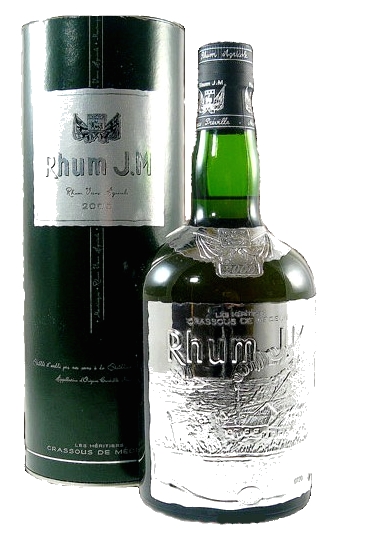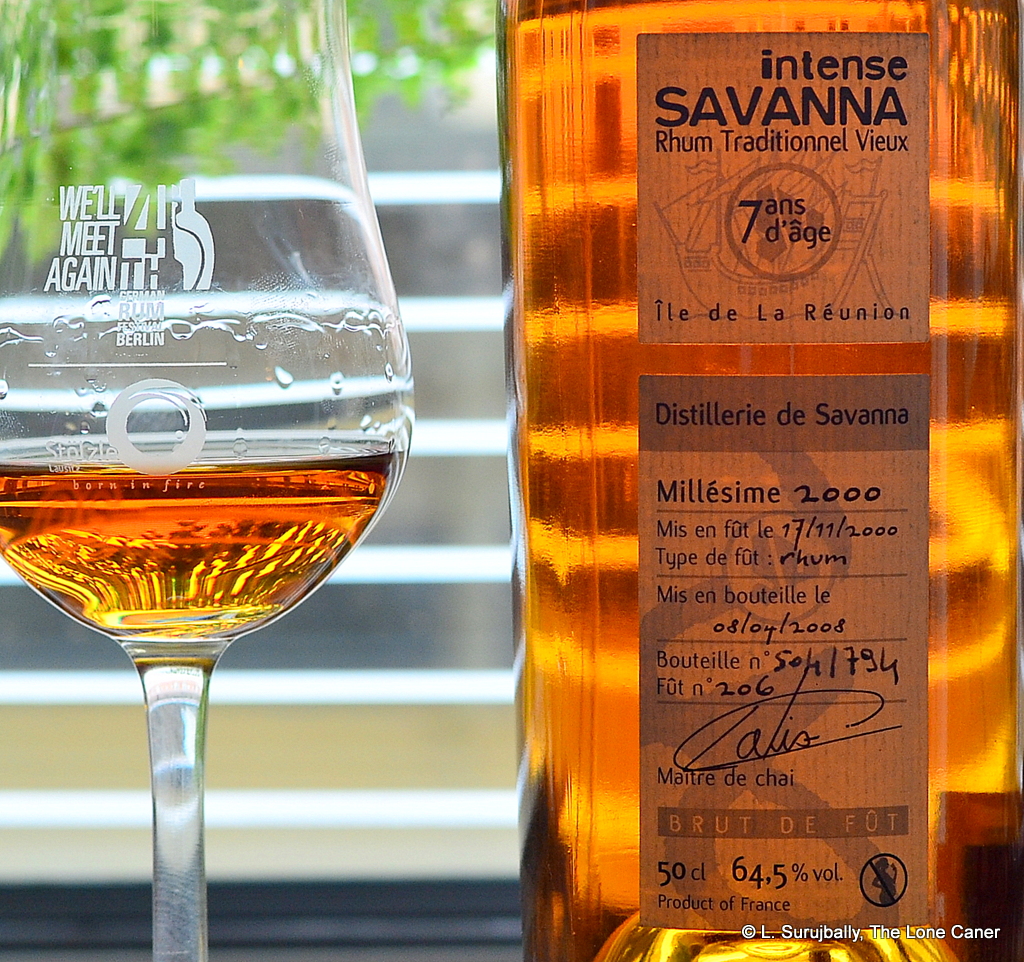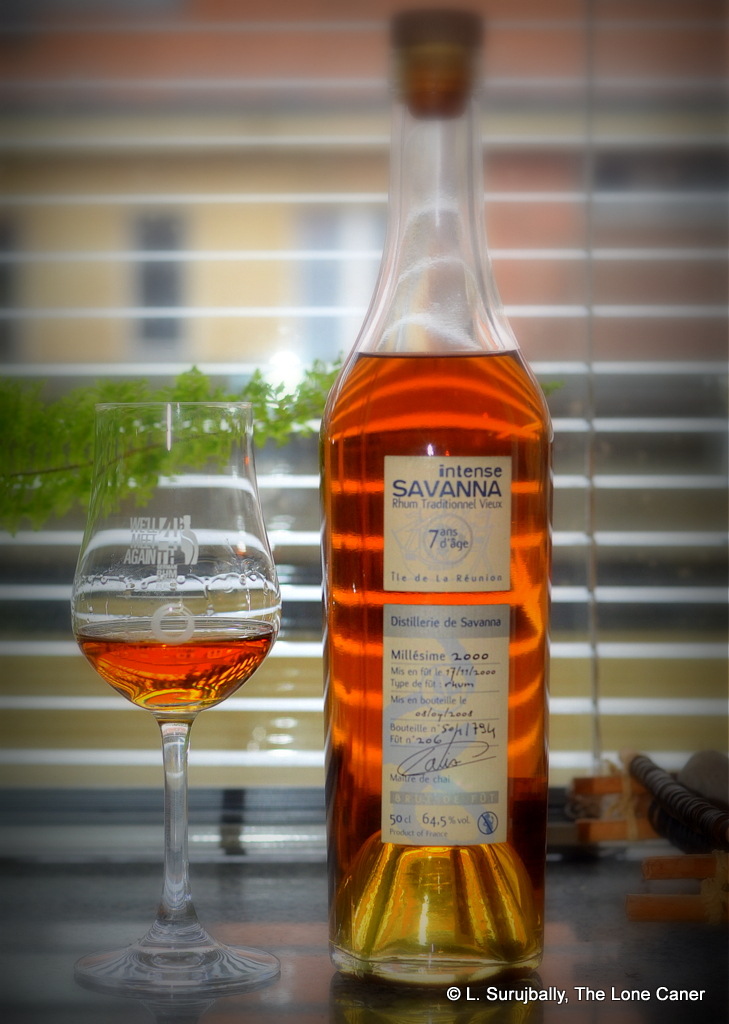
Photo shamelessly cribbed from DuRhum.com
#485
Ever notice how on the British West Indies there are just a few or just one big gun per island or country — like DDL, Appleton, Mount Gay, Foursquare, Angostura, St Lucia Distilleries, St Vincent Distillers, Rivers Royale, and so on — while the smaller islands from the French side like Martinique, Guadeloupe, Reunion and Mauritius seem to have little outfits all over the place? I don’t know what’s behind that – maybe it has to do with the commercial cultures of each sphere. Whatever the case, one can’t fault the results of multiple distillers competing fiercely for global bucks and worldwide street cred, because it all redounds to the benefit of us rum chums, and these distillers sure haven’t let a few centuries of experience wither on the vine and be forgotten.
Consider, for example, J.M., which is among the last of the family operated independent distillers operating on Martinique: the initials refer to Jean-Marie Martin, a previous 19th century owner, and the estate has its origins with the famed Pere Labat way back in the 1700s, though it has changed hands several times since then. With the surge of interest in agricoles over the last five years or so their profile has been raised somewhat, with good reason – what they make is damned fine: I’ve tried just a few of their rums so far, none of which scored less than 86, and this one, issued at 47.2% is just as good as the others.
Just as a side note, there are two variations of the Millesime 2000 – one was bottled in 2009 at 47.2%, which is this one, an eight year old; and another one bottled in 2016 at a lighter 41.9%, a fifteen year old. The one I have is something of a premium edition, a numbered bottle meant to celebrate the arrival of the 2000s, silver-wrapped green bottle and enclosure, pretty cool looking. Samples came courtesy of (and with thanks to) Cyril of DuRhum and Laurent of “Poussette” fame, and I’ve pilfered Cyril’s picture to give you a sense of how it looks.
What was surprising about the AOC rum was how it nosed more traditionally – creme brulee and cheesecake to start with, backed up by a very light line of acetone and furniture polish (!!)…not quite the profile I was expecting. Still, these aromas developed over time to a more commingled crushed apple juice, together with honey, raisins, cream soda, nutmeg and cinnamon, and it was all quite delicate and clear — only after about fifteen minutes or so did additional fruits, herbs and the characteristic grassy and citrus smells start to poke through, adding some nuts and light oak to the whole mix.
Tastewise it was just lovely. Light and perfumed – the strength was perfect for what it presented – with lots of delicate breakfast spices, grass, citrus, herbs, smoke, leather and woods. Florals were more noticeable here, frangipani and hibiscus, plus a more salty profile taking the front seat as well – brine, olives, cream pie crust, cereals, toblerone, white chocolate and almonds. It was very well balanced off between these tastes, and was not so much crisp as simply well integrated and easy. The fruits in particular were hard to distinguish…they existed the notes of green grapes, some apples and pears took some time to ferret out, and I felt the vanilla became somewhat over-dominant towards the end, obscuring other aspects which worked better. The finish gave no cause for complaint, though — short, as was to be expected, with nutmeg, vanilla, aromatic tobacco, orange zest and some more light fruits.
Overall, this was one of the better agricoles I’ve had over the years. It was another one of those JM rhums which defined itself by being quietly unique in its own way, while never entirely losing touch with those aspects of the agricole world which make them such sought after products in their own right. Our senses are led gently through its composition, the high points hinted at without being driven home with a bludgeon and it has a quiet voluptuousness which is never punched up or intrusive. This is a rum we don’t tipple or swill or cautiously sip – we sample its languourous charms, enjoy the experience, and glide through to an appreciation of its construction. And when it’s over and the glass is empty, we may not entirely recall the experience with clarity…we just know we would be fools if we didn’t pour ourselves another glass. It’s that kind of rhum.
(86.5/100)

